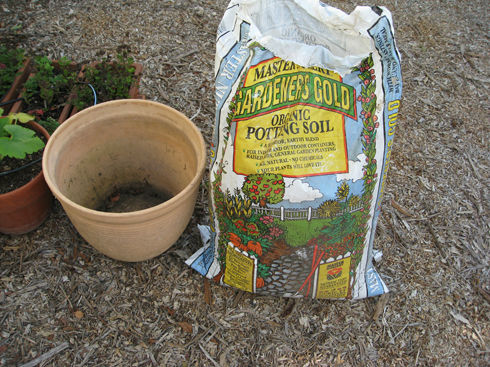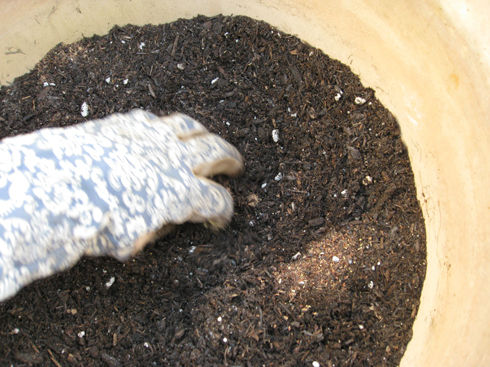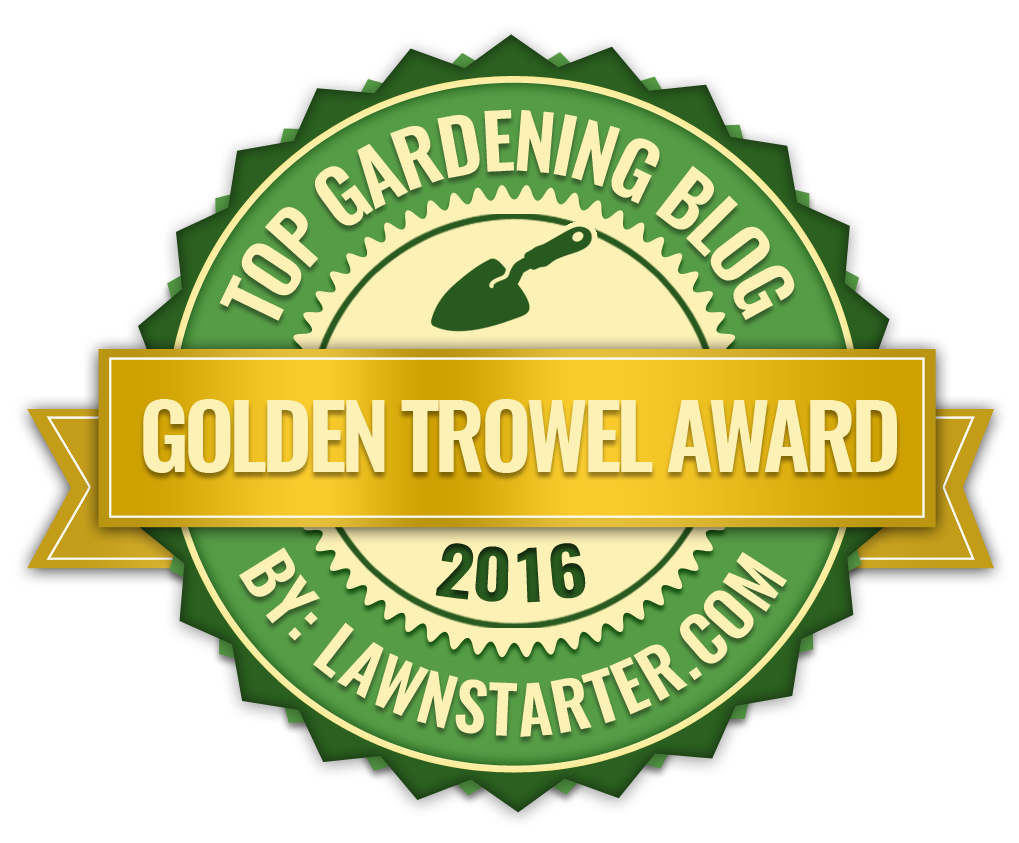A familiar question arrived in the Ask Gardenerd Inbox this week:
“Hi Gardenerd! It’s been slow getting started with my garden because my
life has been chaotic for a while. Anyway, I started some seedlings
inside and potted them in small pots outside and some in a long box but
they haven’t grown, they still look like seedlings for two months now,
and my broccoli raab, red kale, and red romaine wouldn’t grow past four
or five inches. I’m so discouraged but my sister came from AZ to help
me out. And that’s why I’m writing: she said my soil wasn’t amended well
and wants me to order a lot of organic soil. Can you tell me where I can
buy some please? And why is it that some people can plant in any ole
soil and grow and I can’t after buying some organic soil?
I know what you mean. It’s frustrating to see some people have
success with crappy old soil – my parents had thriving (overflowing)
fruit trees that were planted in unamended soil which was never, ever
fertilized. I coddle my fruit trees and still can barely get them to
produce. It’s infuriating!

Gardener’s Gold – container planting mix
Let’s Talk About Soil
There are a lot of factors that go into creating the right environment for healthy plants.
Soil is the foundation for good gardening, and so many people start out with a soil test to find out what’s missing before they plant anything. Since you are planting in containers, I’m guessing you’re using bagged organic mix. This is the part where I mention that not all organic mixes are created equally.
The cheap stuff from Home Depot is basically wood shavings and some peat moss – your plants will starve on that. Anything made by Scotts/Miracle Grow is laced with chemical fertilizers and is therefore not organic, so I don’t recommend using that brand.
My preferred line of soil amendments comes from Master Nursery Garden Center – Bumper Crop and Gardener’s Gold. Both contain bat guano, chicken manure, worm castings and other nutrient-rich components that help plants grow well. (Granted, unless you make it yourself from scratch, there’s no way to know where these ingredients are sourced from, so we all take our chances with any bagged mix).
If you really want purity and pretty much guaranteed success, mix in a bag of Malibu Compost’s biodynamic compost. It’s pricey but completely worth it. Click the link and type in your zip code to find a retailer that carries it.

Mixing in biodymanic compost will elevate your soil to a new level
What else can You do?
There are other things to
consider when discussing your question though. You said you started your plants indoors and planted them outside in full sun. Not knowing where you live, it’s hard to advise what to plant when, but here in Southern California, brassicas like your broccoli raab and kale, as well as lettuces grow best in the fall. Once warm weather hits, they either bolt to seed or get covered with aphids. So try again in October and you’ll probably have better luck.
Before you transplant seedlings into the ground (or containers) make sure you tease the roots apart a little bit. That helps them get established in their new home and grow stronger. Also, make sure you keep them watered – soil in containers dries out faster than in-ground plantings.
Water every other week with kelp emulsion – a broad spectrum liquid fertilizer that helps plants thrive. That should help. Use the links above to locate a retailer near you and start amending!
Thanks for writing in, and good luck with your garden.








i am doing a science fair experiment on which plant will grow the tallest. What is a catchy title for a plant that won’t grow?????
Well, since there’s a movie “Pan” coming out soon about the boy who won’t “grow up” you could call it Peter Pan. Other options could be Stuntly (stunted seedling), Shorty McStubborn, Jack’s Worst Nightmare (referencing Jack and the Beanstalk). You could riff on the type of plant you’re growing, like Sad Serrano or Maladjusted Morning Glory. Personally I’d go with “Aphid bait,” since that’s usually what happens to plants that fall behind in the garden.
I hope this string of randomness helps you with your project. Good luck!
I would fertilize. I like kelp emulsion for tomatoes mid-season. It doesn’t clog sprayers, in my experience. As far as pinching, there are several schools of thought. I prune suckers, but I don’t top off the plants. They get long and keep going through summer (sometimes into winter even). I always bury deep when planting and remove the lower leaves. It helps the plant establish a stronger root system.
At this point, I think you could pause on pinching and pruning, give it some nitrogen (compost, worm castings, etc.) and see if you get another flush of leafy growth. Then hit it with some kelp emulsion for fruit and flower development. My 2 cents.
I pinched my tomatoes back up to the first flowers. I’m finding my plants are less than full now. Should I fertilize and with what? Most advice is not to fertilize, but I usually amend with more compost and alfalfa. I do have fox farm liquid plant food, but have not had good luck with spraying organic liquid fertilizers as they clog the holes in my sprayer. Using watering cans is too hard for me. I always regret pinching back, other than removing the first few branches and burying the tomatoes deeply when I plant. I am in the S F Bay area in California. Any ideas?
I know that in some places sewage sludge is safe enough to use, but not here in LA (at least not without those digestors and filters you spoke of). Someday we’ll return to recycling everything instead of throwing it “away”. In the meanwhile, thanks for sharing your 2 cents and happy gardening!
Greatest sin in an all-knowing America: the treatment of its sewage! Fact is, American sewage when properly husbanded as a natural resource flow, can produce copious amount of domestic fuel – methane, through anaerobic digestion, easy to handle in existing propane bottles! and top – soil building fertilizer sludge.
First step is to regulate what goes down the drains of America! Second step: build the digestors in every city and town. Third step, collect the benefits! Canadians intend spreading this fertilizing sludge on now legal hemp crops planted on semi-arable lands, and, literally turning Shiite into money this way.
Composting for better soil works well for me. I have bought loads of cow manure, composted it in piles in my yard, and rotor tilled it in, in shallow fashion. Local horse stables gladly contribute to the compost pile, weeds from local beaches work well, lawn clippings not recommended: they contain poisons for lawn weeds – or broad leafed plants – like garden veggies! Dammit! Here, in Lakefield Ontario, Canada, by-laws were passed, lawn poisons forbidden, and now even lawn clippings can be composted for veggie gardens. The story from Ireland, the harvesting of sea-weeds for soil improvement yields a wealth of historical information.